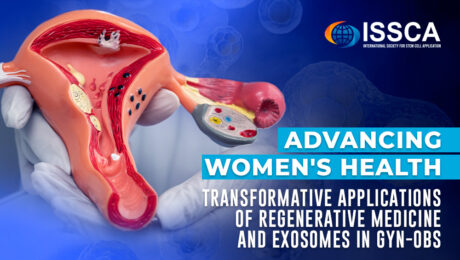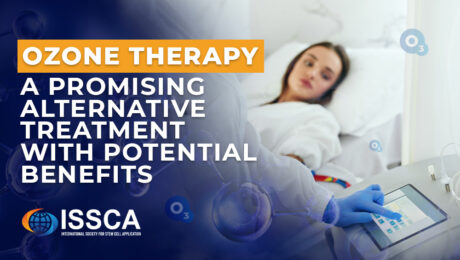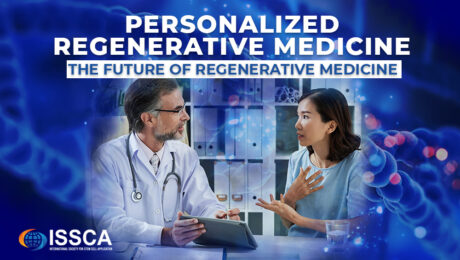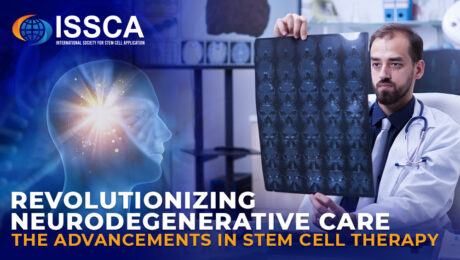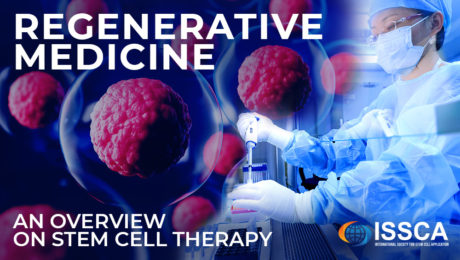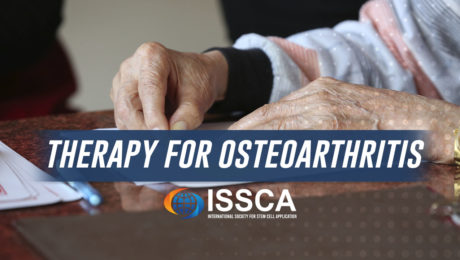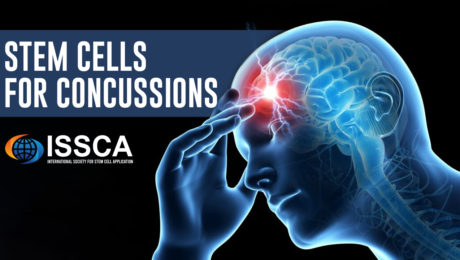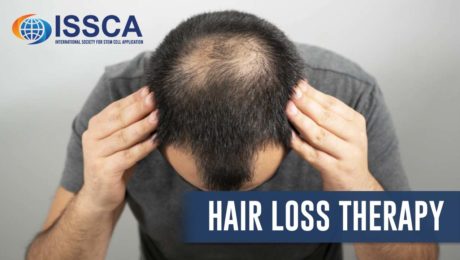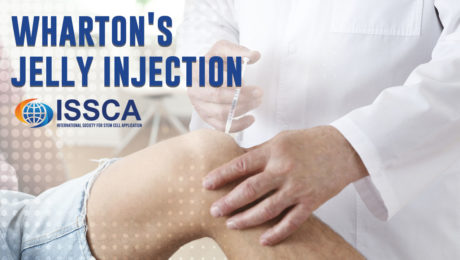Advancing Women’s Health: The Transformative Applications of Regenerative Medicine and Exosomes in GYN-OBS
FRIDAY, 23 JUNE 2023 / PUBLISHED IN BLOG
In recent years, the field of gynecology and obstetrics (GYN-OBS) has witnessed remarkable advancements in regenerative medicine and the utilization of exosomes. These groundbreaking technologies offer innovative approaches to address various gynecological and obstetric conditions, revolutionizing the way we approach women’s health. Let’s explore the exciting applications of regenerative medicine and exosomes in GYN-OBS and their potential to transform patient care.
Regenerative Medicine: Unleashing the Power of Healing
Regenerative medicine harnesses the body’s own regenerative capabilities to promote healing, tissue repair, and regeneration. In GYN-OBS, it has shown promising applications in conditions such as endometriosis, uterine fibroids, pelvic floor disorders, and even infertility. Through the use of stem cell therapy and other regenerative techniques, women can experience non-invasive and effective treatments that target the root causes of their conditions.
Exosomes: The Cellular Messengers of Healing
Exosomes, tiny vesicles derived from stem cells, are gaining recognition for their pivotal role in intercellular communication. In GYN-OBS, exosomes are being investigated for their potential to modulate inflammation, promote tissue regeneration, and enhance healing. They hold promise in managing conditions like pelvic inflammatory disease, optimizing postpartum recovery, and even supporting reproductive health.
Enhancing Fertility and Reproductive Health
One area where regenerative medicine and exosomes are making significant strides is in fertility and reproductive health. Stem cell therapies offer the potential to improve ovarian function, restore hormonal balance, and enhance the success rates of assisted reproductive technologies. Additionally, exosomes may play a role in optimizing endometrial receptivity and supporting embryo implantation, leading to improved outcomes in fertility treatments.
Reimagining Postpartum Recovery and Pelvic Health
The postpartum period can bring challenges for women, including pelvic floor disorders, urinary incontinence, and perineal tears. Regenerative medicine and exosome therapies present promising solutions for promoting postpartum healing, strengthening pelvic floor muscles, and improving overall pelvic health. These non-surgical and minimally invasive approaches offer women new avenues for restoring their well-being and quality of life after childbirth.
The Future of Regenerative Medicine and Exosomes in GYN-OBS
The applications of regenerative medicine and exosomes in GYN-OBS herald a new era in women’s healthcare. With their potential to address a wide range of gynecological and obstetric conditions, these innovative technologies bring hope and transformative possibilities for women worldwide. As research and advancements continue to unfold, the future of GYN-OBS holds promise for personalized, non-invasive, and effective treatments that prioritize the holistic well-being of women.
Remember, always consult with healthcare professionals to understand the best options for your individual needs and explore the potential of regenerative medicine and exosomes in GYN-OBS. You can learn more about regenerative medicine by enrolling in our international certification program at www.issca.us.
- Published in Blog
Ozone Therapy: A Promising Alternative Treatment with Potential Benefits
MONDAY, 24 APRIL 2023 / PUBLISHED IN BLOG
Ozone therapy is a promising alternative medical treatment that has gained popularity in recent years. It involves the administration of ozone, a form of oxygen, to treat various medical conditions, ranging from chronic pain to infections. Although the scientific evidence on the effectiveness of ozone therapy remains limited, many people claim to have experienced significant health benefits from this alternative treatment. In this article, we’ll explore the potential benefits and risks of ozone therapy, as well as the latest research on this alternative medical treatment.
What is Ozone Therapy?
Ozone therapy is a safe, non-invasive, and effective alternative medical treatment that has been used for over a century. It involves the administration of ozone, a gas made up of three oxygen atoms, to the body in various forms, such as injections, insufflations, or topical applications. Ozone is a powerful oxidant that can damage cells and tissues, which can have positive or negative effects, depending on the form and amount of ozone used.
One of the key benefits of ozone therapy is its ability to improve blood circulation and oxygen delivery to the tissues, which can help reduce inflammation, support wound healing, and boost immune function. Additionally, ozone therapy is believed to have antimicrobial and antiviral properties, which may help fight infections caused by bacteria, viruses, and fungi.
Potential Benefits of Ozone Therapy
Ozone therapy has been used to treat a wide range of medical conditions, including:
- Chronic Pain: Ozone therapy may help reduce pain and inflammation in conditions such as osteoarthritis, herniated discs, and fibromyalgia.
- Infections: Ozone therapy may help fight infections caused by bacteria, viruses, and fungi, including Lyme disease, hepatitis, and HIV.
- Autoimmune Diseases: Ozone therapy may help reduce inflammation and improve immune function in conditions such as multiple sclerosis, rheumatoid arthritis, and lupus.
- Skin Conditions: Ozone therapy may help treat various skin conditions, including eczema, psoriasis, and acne, by improving blood circulation and oxygenation.
Moreover, ozone therapy is a safe and non-invasive treatment that doesn’t have the side effects commonly associated with traditional medical treatments. It’s also relatively inexpensive and can be administered in a variety of settings, including clinics, hospitals, and private practices.
Latest Research on Ozone Therapy
Although the scientific evidence on the effectiveness and safety of ozone therapy remains limited, some recent studies have suggested that ozone therapy may have potential health benefits in certain conditions.
- Immunomodulatory Properties: A study published in the Cuban journal of immunology describes the immunomodulatory properties of ozone therapy by characterizing the biological effects of ozone on immune system cells, soluble mediators, and other cell types.
- Pain Management: A 2022 review on ozone therapy in pain medicine highlights the high safety of pain treatments with ozone therapy, especially modern medical ozone generators with great precision.
- Diabetic Pain Relief: A 2020 study on systemic ozone therapy in insulin-dependent diabetic patients found that the analgesic and anti-inflammatory properties of ozone make it one of the most efficient therapeutic tools for controlling chronic pain in insulin-dependent diabetic patients.
Conclusion
Ozone therapy is a promising alternative medical treatment that has been used to treat various medical conditions. Many people claim to have experienced significant health benefits from this alternative treatment. Furthermore, ozone therapy is a safe and non-invasive treatment that doesn’t have the side effects commonly associated with traditional medical treatments.
If you’re interested in ozone therapy, make sure to do your research, ask questions, and consider this alternative medical treatment as a potential option for your health concerns. It’s important to stay informed about the latest developments in stem cell therapy. You can learn more about regenerative medicine and stem cells by enrolling in our international certification program at www.issca.us.
- Published in Blog
Personalized Regenerative Medicine: The Future of Regenerative Medicine
MONDAY, 17 APRIL 2023 / PUBLISHED IN BLOG
Regenerative medicine is a rapidly growing field that focuses on repairing or replacing damaged or diseased tissues and organs using stem cells, growth factors, and other advanced therapies. The effectiveness of this approach has been demonstrated in treating a wide range of conditions, including heart disease, diabetes, joint pain, and neurological disorders. One of the major challenges of regenerative medicine, however, is that not every patient responds to the same treatment. This is where personalized regenerative medicine comes into play.
What is Personalized Regenerative Medicine?
Personalized regenerative medicine involves tailoring treatments to meet the unique needs of each patient based on their genetic profile, lifestyle, and medical history. This approach recognizes that no two patients are the same and that a one-size-fits-all approach to regenerative medicine is not always effective.
As part of personalized regenerative medicine, advanced technologies such as genomics, proteomics, and metabolomics are used to analyze a patient’s unique biological profile. Regenerative medicine centers utilize this information to develop personalized treatment plans tailored to their individual needs and conditions, ranging from stem cell therapy to gene therapy.
Why is Personalized Regenerative Medicine the Future of Regenerative Medicine?
There are several reasons why personalized regenerative medicine is the future of regenerative medicine:
More Effective Treatments
By tailoring treatments to individual patients, personalized regenerative medicine has the potential to be much more effective than traditional one-size-fits-all approaches.
Improved Patient Outcomes
Because personalized regenerative medicine takes into account the unique needs and conditions of each patient, it has the potential to improve patient outcomes and reduce the risk of complications.
Lower Healthcare Costs
By providing more effective treatments and reducing the risk of complications, personalized regenerative medicine has the potential to lower healthcare costs in the long run.
Better Understanding of Disease
Personalized regenerative medicine involves analyzing a patient’s unique biological profile, which can help researchers and healthcare providers better understand the underlying mechanisms of disease.
Advancements in Technology
As technology continues to advance, personalized regenerative medicine will become even more precise and effective, leading to even better patient outcomes.
Conclusion
The concept of personalized regenerative medicine is an exciting new approach to regenerative medicine that has the potential to revolutionize the healthcare industry. Individualized regenerative medicine has the potential to be more effective, improve patient outcomes, lower healthcare costs, and provide better understanding of disease by tailoring treatments to the individual patient. As technology continues to advance, we can expect to see even more exciting developments in this field in the years to come.
You can learn more about regenerative medicine and stem cells by enrolling in our international certification program at www.issca.us.
- Published in Blog
Revolutionizing Neurodegenerative Care: The Advancements in Stem Cell Therapy
MONDAY, 13 MARCH 2023 / PUBLISHED IN BLOG
Neurodegenerative diseases, including Alzheimer’s disease, Parkinson’s disease, Huntington’s disease, and amyotrophic lateral sclerosis, are a group of incurable neurological disorders characterized by the chronic progressive loss of different neuronal subtypes. The conditions are debilitating and affect millions of people worldwide. Despite its increasing prevalence among the ever-increasing aging population, little progress has been made in the coincident immense efforts towards development of therapeutic agents. However, recent advancements in stem cell therapy, including stem cell-derived exosomes, neurotrophic factors (NTFs), and their combination, show promise as potential therapeutic agents in neurodegenerative diseases.
The Promise of Stem Cell Therapy
In recent years, stem cells have emerged as one of the most active research therapeutic tools for many diseases. Stem cells are undifferentiated cells that have the ability to develop into pluripotent stem cells and adult stem cells. All stem cells have the potential for continuous self-renewal, high proliferation, and multidirectional differentiation into various cell types to replace degenerated or dead cells. In the context of neurodegenerative diseases, stem cells can be used to replace lost or damaged neurons, provide neuroprotection, and promote neural repair. These properties make stem cells an attractive option for treating neurodegenerative diseases, as they have the potential to slow or even reverse the progression of these conditions.
Advantages of Stem Cell Therapy
One of the key benefits of stem cell therapy for neurodegenerative diseases is that it offers a non-invasive, minimally-invasive, and non-toxic alternative to traditional treatments. Unlike drugs and surgery, stem cell therapy does not produce adverse side effects and can be administered in a safe and controlled manner. In clinical trials, stem cell therapy has been shown to be effective in reducing symptoms and improving quality of life for patients with neurodegenerative diseases.
Alzheimer’s Disease (AD)
Alzheimer’s disease (AD) is a progressive neurodegenerative disease and the most common form of dementia, affecting approximately 55 million people worldwide. Cognitive impairment is a hallmark of AD. Currently, drug therapies can only delay symptoms, but not relieve disease pathology or progression. Researchers have demonstrated that neurons derived from stem cells can integrate with existing neural networks and repair damaged neurons within the host brain, improving learning and memory deficits. NTFs can improve AD symptoms and provide neuroprotective effects.
Parkinson’s Disease (PD)
The second most common neurodegenerative disorder is Parkinson’s disease (PD). The motor symptoms of PD mainly include rest tremor, rigidity, bradykinesia, and postural instability, while common nonmotor symptoms include neuropsychiatric and sleep disorders as well as sensory and autonomic dysfunction. At present, there is no cure for PD or disease-modifying therapy. It is common for symptom-relief medications to only provide partial relief and elicit side effects such as motor complications, gastrointestinal problems, and neurological issues. In spite of the fact that these treatments do not address the underlying pathology, alternative therapies, especially those based on stem cells and NTFs, are still being pursued intensively.
Huntington’s Disease (HD)
Huntington’s disease (HD) is characterized by motor, cognitive, and psychiatric dysfunctions. The study of multiple possible neurodegenerative mechanisms of HD is currently underway, and this knowledge is expected to contribute to the development of new HD treatments. The abilities of stem cells to rescue or replace the damaged and dying neurons, and to prevent further cell damage and death, make stem cell-based therapies promising for treatment of this neurodegenerative disease.
Amyotrophic Lateral Sclerosis (ALS)
As a neurodegenerative disorder, amyotrophic lateral sclerosis (ALS) involves progressive degeneration of both upper and lower motor
neurons, resulting in palsy and death within 3-5 years of onset. Currently, only two disease-modifying medicines are available, each showing benefit to a limited number of patients. Stem cell-based therapy holds great promise for treating ALS by providing both cell replacement and NTF delivery to target the multiple pathologies. Stem cells available for ALS treatment include NSCs, MSCs, embryonic stem cells, induced pluripotent stem cells, and olfactory ensheathing stem cells.
The Future of Stem Cell Therapy in Neurodegenerative Diseases
While stem cell therapy is still in the early stages of development, it holds enormous promise as a future treatment for neurodegenerative diseases. A number of studies have demonstrated that stem cells and NTFs offer considerable therapeutic potential, especially when they are used together. In addition to replenishing target neurons, stem cells combined with NTFs can produce neurotrophins to improve the microenvironment that promotes nerve repair and regeneration. As research continues, we can expect to see even more exciting advancements in this field, bringing hope to those affected by these debilitating conditions.
Conclusion
Stem cell therapy represents a revolutionary approach to treating neurodegenerative diseases, offering a non-toxic, minimally-invasive alternative to traditional treatments. With ongoing research and development, the potential to improve patient outcomes and quality of life is immense. It’s important to stay informed about the latest developments in stem cell therapy. You can learn more about regenerative medicine and stem cells by enrolling in our international certification program at www.issca.us.
- Published in Blog
New advances in osteoarthritis therapy with stem cells
FRIDAY, 18 NOVEMBER 2022 / PUBLISHED IN BLOG
Osteoarthritis is a rheumatic pathology that damages the articular cartilage. By joining two bones through the joint capsule, the joints are able to move, providing us with functional autonomy. An inner fluid called synovial fluid is usually found within joints, which is produced by the synovial membrane. Articular cartilage covers the ends of the bones that form the joint. As a result of damage to this articular cartilage, pain, stiffness, and functional impairment occur. Osteoarthritis is the most common joint disorder, usually beginning between the ages of 40 and 50, affecting to some degree almost everyone over the age of 80. Typically, osteoarthritis affects the spine, shoulders, fingers, hips, knees, and toe joints.
Potential of Stem Cell Therapies
Stem cell therapies have the potential to treat a broad spectrum of diseases, including osteoarthritis, rhizarthrosis, diabetes, neurodegenerative diseases, spinal cord injuries, and heart disease. By utilizing stem cells, regenerative medicine is capable of repairing tissues in affected areas. The main difference between lipogem therapy and other treatments for osteoarthritis is that lipogem therapy regenerates cartilage, avoids surgery and its sequelae, and improves the quality of life for patients.
Advances in Sports Medicine and Traumatology
The potential for medical treatments with stem cells and their by-products is currently very high. In the field of sports medicine and traumatology, one of the most outstanding advances has been made for the first time in decades recently: Spanish scientists have achieved a degree of tendon regeneration in 100% of injured patients, resulting in a decrease in pain and a return to sport within two months, and just six months after the trial was completed.
A research performed by the Institute of Regenerative Tissue Therapy (ITRT), published by the prestigious American Journal of Sports Medicine, demonstrates how this therapy regenerates chronic lesions in the patellar tendon and opens up a new therapeutic option for this tissue, which was considered impossible to regenerate.
Adipose Tissue-Derived MSCs
In most patients, fat tissue can be harvested minimally invasively (under local or general anesthesia), providing a highly viable MSC population regardless of donor age. Similar to MSCs derived from other tissues, adipose tissue-derived MSCs have regenerative potential. As osteoarthritis is a very common joint disease, and knee osteoarthritis is the most common form, it is necessary to review scientific literature on osteoarthritis treatments with stem cells, like lipogems.
Lipogems Therapy
Lipogems therapy is a novel procedure that enhances the body’s natural ability to heal itself through the innovative power of science and biotechnology. The Lipogems method involves injecting mesenchymal stem cells into the joints. Adipose-derived mesenchymal stem cells have enormous regenerative potential. They also have a regenerative capacity independent of their age. Even older individuals can benefit from this procedure.
Injection of mesenchymal stem cells into the knee, particularly in the early stages of osteoarthritis, can stop the process of inflammation and degeneration, especially in the less advanced stages of the disease. In addition to preventing progressive physical deterioration of the articular cartilage, this treatment contributes significantly to a patient’s well-being and prevents the installation of knee prostheses.
Patellar Tendinopathy: Physiotherapeutic Treatment and Stem Cell Therapy
Injuries to the patellar tendon that connects the kneecap to the tibia are known as patellar tendinopathy or patellar tendinitis. The patellar tendon works with the muscles in the front of the thigh to extend the knee so you can kick, run, and jump. Athletes who perform frequent jumping in their sports, such as basketball and volleyball, are most likely to suffer from patellar tendonitis. However, people who don’t engage in jumping sports may develop patellar tendonitis. Patients with patellar tendinitis usually begin treatment with physical therapy to stretch and strengthen their knee muscles.
Strength Training and Stem Cell Therapy for Tendinopathies
Strength training with eccentric resistance is one of the most common treatments for tendinopathies. Alternatively, it has been demonstrated that bone marrow-derived mesenchymal stem cells (MSCs) can regenerate injured patellar tendons. Within six months of treatment, it has been observed that the structure of this tissue – which is always difficult to treat – is restored, reaching a regeneration of 40% in all injured persons, with a gradual improvement that eventually becomes complete.
Combination Therapies for Patellar Tendinopathy
It has been found that traditional management methods, including isometric or eccentric exercises, shock wave therapy, and even surgery, are not effective. As part of a rehabilitation program in chronic patellar tendinopathy, autologous expanded bone marrow mesenchymal stem cells (BM-MSC) or leukocyte-poor platelet-rich plasma (Lp-PRP) may be effective in reducing pain and improving activity levels. Traditional management, which includes isometric or eccentric exercises, shock wave therapy, and even surgery, has limited success. A combination of autologous expanded bone marrow mesenchymal stem cells (BM-MSCs) and leukocyte-poor platelet-rich plasma (Lp-PRP) and rehabilitation may reduce pain and improve activity levels in active participants with chronic patellar tendinopathy.
To learn more about stem cells, cellular therapies, and keep up to date with all the information about regenerative medicine and its advances, sign up for our international certification in regenerative medicine at www.issca.us.
- Published in Blog
Regenerative Medicine – An Overview On Stem Cell Therapy
THURSDAY, 10 NOVEMBER 2022 / PUBLISHED IN BLOG
Stem cell therapy is a form of regenerative medicine designed to repair damaged cells within the body by reducing inflammation and modulating the immune system. This phenomenon makes stem cell therapy a viable treatment option for a variety of medical conditions.
What is Stem Cell Therapy?
The term stem cell therapy refers to any treatment involving the use of viable human stem cells, including embryonic stem cells (ESCs), induced pluripotent stem cells (iPSCs), and adult stem cells. Stem cells have the unique ability to differentiate into specific cell types necessary for repairing diseased tissues, making them ideal for tissue and organ transplantation.
The Hierarchy of Stem Cells
In general, stem cells fall into three categories based on their differentiation potential:
- Totipotent Cells: The most basic and capable of forming a complete embryo and extraembryonic tissues.
- Pluripotent Cells (Embryonic Stem Cells): Can differentiate into any of the three embryonic germ layers (ectoderm, mesoderm, and endoderm).
- Adult Stem Cells: Found in specialized tissues throughout the body, capable of differentiating into specific cell types related to their tissue of origin.
Adult stem cells are considered the gold standard for stem cell-based therapies due to their versatility and ability to maintain homeostasis throughout an organism’s lifespan.
Stem Cell Research for Treating Disease
Stem cell research has made significant advancements, particularly with induced pluripotent stem cells (iPSCs), which are generated from adult cells and share properties with embryonic stem cells. This innovation has enhanced disease identification and treatment possibilities, particularly in autologous transplants using patient-matched cells.
Applications of Stem Cells
Stem cells hold potential for treating diseases such as diabetes and heart disease due to their regenerative capabilities. Ongoing research aims to better understand how stem cells can be utilized in regenerative and reparative medicine to effectively treat various conditions.
Future Directions in Stem Cell Research
Stem cell studies continue to expand our knowledge of cell development and regeneration. Researchers are leveraging stem cells to test new drugs, develop model systems for studying normal development, and investigate the causes of birth defects.
To learn more about stem cells, cellular therapies, and new medical protocols using exosomes, sign up for our international certification in regenerative medicine at www.issca.us.
- Published in Blog
Does Stem Cell Therapy Help With Osteoarthritis?
FRIDAY, 24 SEPTEMBER 2021 / PUBLISHED IN BLOG
Overview
Joint pain is one of the most common complaints in medicine. It is more prevalent in seniors whose joints have been subject to long-term wear and tear.
Many people develop conditions like osteoarthritis (OA) and rheumatoid arthritis (RA). The former is more common in women.
Although the pain may be temporary, it can also last for months or even years. For this reason, researchers suggested stem cell therapy to address joint disorders.
In this article, we will discuss how stem cell therapy can be useful in treating joint conditions such as osteoarthritis.
Knee Pain: What Can I Do?
Stem Cell Therapy and Arthritis
According to the Centers for Disease Control and Prevention, 54.4 million Americans (22.7%) suffered from arthritis during 2013–2015.
The number is likely to be underestimated because people don’t always seek medical attention. Instead, they prefer to use home remedies to soothe the pain.
These statistics are still extremely troubling because of the poor functional prognosis associated with arthritis.
Once you get diagnosed with arthritis, several treatments could be prescribed, including acetaminophen – it is generally the first-line treatment.
Non-Steroidal Anti-Inflammatory Drugs (NSAIDs) are the second. These include naproxen, diclofenac, and ibuprofen.
Side effects of NSAIDs include:
- Stomach ulcers
- Mineral deficiencies
- Increased bleeding risk
Corticosteroids (e.g., prednisone) are another alternative to NSAIDs. These drugs get used when NSAIDs fail to work. Side effects of drugs such as prednisone can be very serious, presenting as:
- Cushing syndrome
- High blood sugar
- Osteoporosis
- Immunosuppression
Non-pharmacological treatments such as cryotherapy or thermotherapy are the final options for treating joint problems.
How Can Cell Therapy Help With Arthritis?
Many treatment options for joint disorders can cause serious side effects, which may be more severe than the original symptoms. Therefore, scientists are always looking for alternative therapies that could help patients without causing an array of side effects.
Enter: Stem Cell Therapy
Patients with osteoarthritis often undergo joints tissue degeneration. Their articulations start to lack structural elements, including bone, cartilage, and ligaments. From this concept, the idea of using stem cell therapy to treat arthritis originated.
Because stem cells have the ability to differentiate into any cell type, they could replace the lost tissue and help restore joint function.
While this treatment may not cure all joint disorders, it is still a viable option that should be discussed. The need for stem cell therapy becomes more pronounced when your symptoms do not respond to conventional therapies.
The best part about stem cell therapy is its side effect profile. Unlike other treatments, stem cell therapy barely causes any adverse effects. In other words, it is completely safe to use on almost everyone.
Here you can check more information about Osteoarthritis and our treatments: Osteoarthritis Treatments
Takeaway Message
Many medical institutions are now incorporating stem cell therapy in their treatment plans. Orthopedic surgery is one of the most popular.
Hopefully, the use of stem cell therapy will become more mainstream to help as many patients as possible.
If you want to learn more about stem cell therapy, please do not hesitate to check out this link: Stem Cell Therapy
- Published in Blog
The Potential Benefits of Stem Cells for Concussions – What You Need To Know (2021)
THURSDAY, 23 SEPTEMBER 2021 / PUBLISHED IN BLOG
Overview
Traumatic brain injuries (TBI), also known as concussions, are among the most frequent causes of death in the United States.
According to the Centers for Disease Control and Prevention (CDC), the number of emergency department visits related to TBI admissions, complications, and deaths increased by 53% in recent years.
People who can recover from TBI may experience irreversible neurological issues throughout their lives. As a result, they lose their autonomy and become reliant on other people to perform daily activities.
However, it’s not all doom and gloom. A few studies suggest that stem cell therapy could be beneficial in the management of TBI.
In this article, we’ll discuss everything you need to know about the potential effects of stem cell therapy in managing concussions.
How Can Stem Cells Help With Concussions?
For those unfamiliar with how stem cells function, here is a short description:
Stem cells can develop into any kind of tissue or cell, including those that don’t typically regenerate (e.g., heart cells, nerve cells). For instance, medical schools often teach that a person has the same number of neurons from the moment they are born to their death.
Although this assertion is not completely true due to the latest evidence that supports the ability of neurons to regenerate, the rate of regeneration is nowhere near enough to restore the damaged tissues caused by TBI or strokes.
To this end, researchers are using stem cells to create new neurons to help patients with TBI, multiple sclerosis, and other neurological disorders.
What is the Scientific Consensus on Stem Cell Therapy and Traumatic Brain Injuries?
Mesenchymal stem cells derived from the bone marrow, umbilical cord, or adipose tissues showed positive results in the management of concussions.
In a number of studies, the administration of stem cell therapy via the spinal cord showed real evidence of lesion improvement. Researchers used advanced imaging techniques such as functional MRI to objectify the changes.
Neuroscientists theorize that stem cells can replace the dead neurons, which helps with restoring some of the lost functions.
Today, hundreds of clinical trials are trying to unveil the full extent of how stem cell therapy helps with traumatic brain injuries.
Based on the available research, scientists advocate for the use of stem cell therapy in treating patients with severe concussions.
However, neuroscientists insist that stem cell therapy is only used in patients who failed to respond to conventional treatment methods.
Are You a Candidate for Stem Cell Therapy?
To see whether you are a candidate for stem cell therapy, contact us by clicking on this link. You will speak with one of our healthcare professionals in Cancun, México.
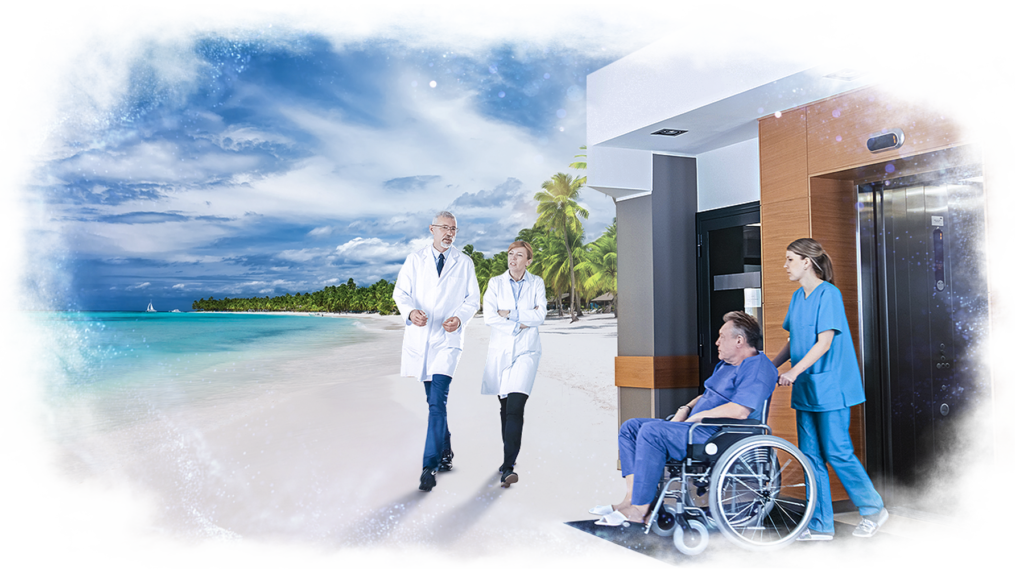
Takeaway Message
Stem cells have an amazing ability to divide into any type of tissue and potentially restore lost functions.
We hope that this article managed to highlight the potential role of stem cell therapy in addressing traumatic brain injury.
If you have any questions or concerns regarding stem cell therapy or TBI, please do not hesitate to share your thoughts in the comment section below.
- Published in Blog
Can Stem Cell Therapy Help With Alopecia (hair loss)?
THURSDAY, 23 SEPTEMBER 2021 / PUBLISHED IN BLOG
Overview
Despite the impressive advancements made in the field of medicine, hair loss remains unsolved today.
Every year, hundreds of clinical trials attempt to come up with a revolutionary treatment that will restore hair loss. Unfortunately, most of these studies fail to produce sufficient results.
Interestingly, the issue with hair loss is not financial. In other words, the scientific community spent billions of dollars to find a solution for this problem. This is not the case for other dermatological conditions (e.g., rosacea).
In this article, we will briefly cover the downsides of hair loss, then switch gears to the potential effects of stem cell therapy in addressing this issue.
The Downsides of Hair Loss
While unaffected people see hair loss as a mere esthetic issue, patients with this condition experience many adverse effects, including mental health problems, such as depression, low self-esteem, and a high sense of self-consciousness.
These issues could negatively impact the quality of life of these patients.
Moreover, alopecia affects both genders in great numbers, making this a real public health issue. We should note that some cases of hair loss have underlying conditions, such as hypothyroidism, autoimmune diseases, and infections.
Stem Cell Therapy and Hair Loss
In recent years, the clinical uses of stem cell therapy have expanded, covering many fields in medicine, such as hair loss.
The primary issue with treating chronic illnesses is their irreversible nature. In other words, once the tissue is lost, there is no effective medication that can recover it.
For instance, when the cells responsible for producing hair follicles die, no drug will be able to restore them.
This is the core issue with alopecia.
Fortunately, biological treatments such as stem cell therapy and exosome therapy might just be the solution to this issue. Due to the incredible ability of stem cells to differentiate into any cell type, they could replace the cells responsible for producing hair follicles.
Typically, your doctor will extract stem cells from your own bone marrow or adipocytes (i.e., fat cells) to prevent any immunological reactions.
Using all of this information, some clinics started offering stem cell therapy to manage hair loss, using noninvasive procedures.
Usually, your doctor will schedule several sessions in order for the results to become apparent. However, many patients report positive findings after the very first therapeutic session.
The Potential of Stem Cell Therapy in Dermatology
Despite the underexploited nature of stem cell therapy, it may potentially help with numerous medical fields, including dermatology and esthetic medicine.
Takeaway Message
Hair loss is a real issue for people from all across the world. Treating this disorder is really challenging, especially when the underlying condition is unclear. Fortunately, stem cell therapy may play an important role in addressing this issue since it’s one of the few therapeutic modalities that actually restore lost tissue.
We hope that this article helped you appreciate the role of stem cell therapy in the management of alopecia.
If you want to become a specialist in stem cell therapies and help your patients, check our next training dates here: Exosomas + PRP The healing combo – Cellular Hope Institute – Cancún, México
- Published in Blog
Wharton’s Jelly injection
MONDAY, 20 SEPTEMBER 2021 / PUBLISHED IN BLOG
What is Wharton’s Jelly?
Wharton’s Jelly is the gelatinous connective tissue found in the umbilical cord. This once discarded substance, previously thought of as afterbirth waste, is rich in healing substances and abundant in mesenchymal stem cells (MSCs).
Benefits of Mesenchymal Stem Cells from Wharton’s Jelly
The mesenchymal stem cells in Wharton’s Jelly are special because they are not readily recognized by the body’s immune system. They are considered “primitive cells,” meaning they have properties similar to embryonic cells. This reduces the risk of an immune reaction when these cells are injected into a patient.
Minimally processed Wharton’s Jelly preserves the growth factors and proteins needed for effective healing.
Who Can Benefit from Wharton’s Jelly Treatment?
Wharton’s Jelly is used in regenerative medicine, which employs naturally occurring cells and substances to promote tissue regeneration and healthy cell growth. This natural substance contains collagen, anti-inflammatory properties, growth proteins, and hyaluronic acid.
Treatment with Wharton’s Jelly can help with various ailments, including:
- Degenerative diseases
- Osteoarthritis
- Ligament and muscle damage
- Joint pain and inflammation
- Chronic pain
- Wound healing
There are no age restrictions on who can receive this treatment, and often a patient will only need treatment once.
How Does Wharton’s Jelly Treatment Work?
A specialized, minimally processed product derived from Wharton’s Jelly is injected into the injured site. While numbing is not always needed, lidocaine may be used for particularly sensitive areas. This process involves a relatively painless pinch of a needle. Once injected, the mesenchymal stem cells begin to transform into the cells needed to regenerate damaged tissue, reducing inflammation and pain, and restoring functionality.
Are There Any Side Effects to the Treatment?
No long-term risks or side effects have been reported. It is important to discuss proper protocols with your doctor before treatment.
Reasons to Undergo Cellular Therapy in Cancun, Mexico with Us
One of the main advantages of receiving cellular therapy treatment in Mexico is the ability to cultivate and reproduce, in a laboratory environment, the cells extracted from patients. This means a patient can receive a much larger concentration of cells, leading to improved results.
Additionally, Mexico is a great option for treatments that require a more invasive approach—a larger operating team, more medical products, and PPE. As one of the Western Hemisphere’s largest medical tourism capitals, treatments in Mexico are performed in hospitals that comply with FDA regulations and are offered at a more affordable price point.
While these treatments require a large investment from the patient, the cost of a multiple-day cellular therapy treatment in Mexico is far more affordable than the same treatment in the United States and Canada, especially without the ability to use culture-expanded cells.
What is the Recovery Period?
The actual injection does not require a recovery period, and most patients can return to their normal daily activities immediately. In cases of injury to ligaments or joints, rest may be required. Please follow your doctor’s advice for the best results from treatment.
Overall, Wharton’s Jelly injection treatment is minimally invasive and can help with a variety of ailments. With its limited side effects and regenerative properties, it is safe for patients of any age.
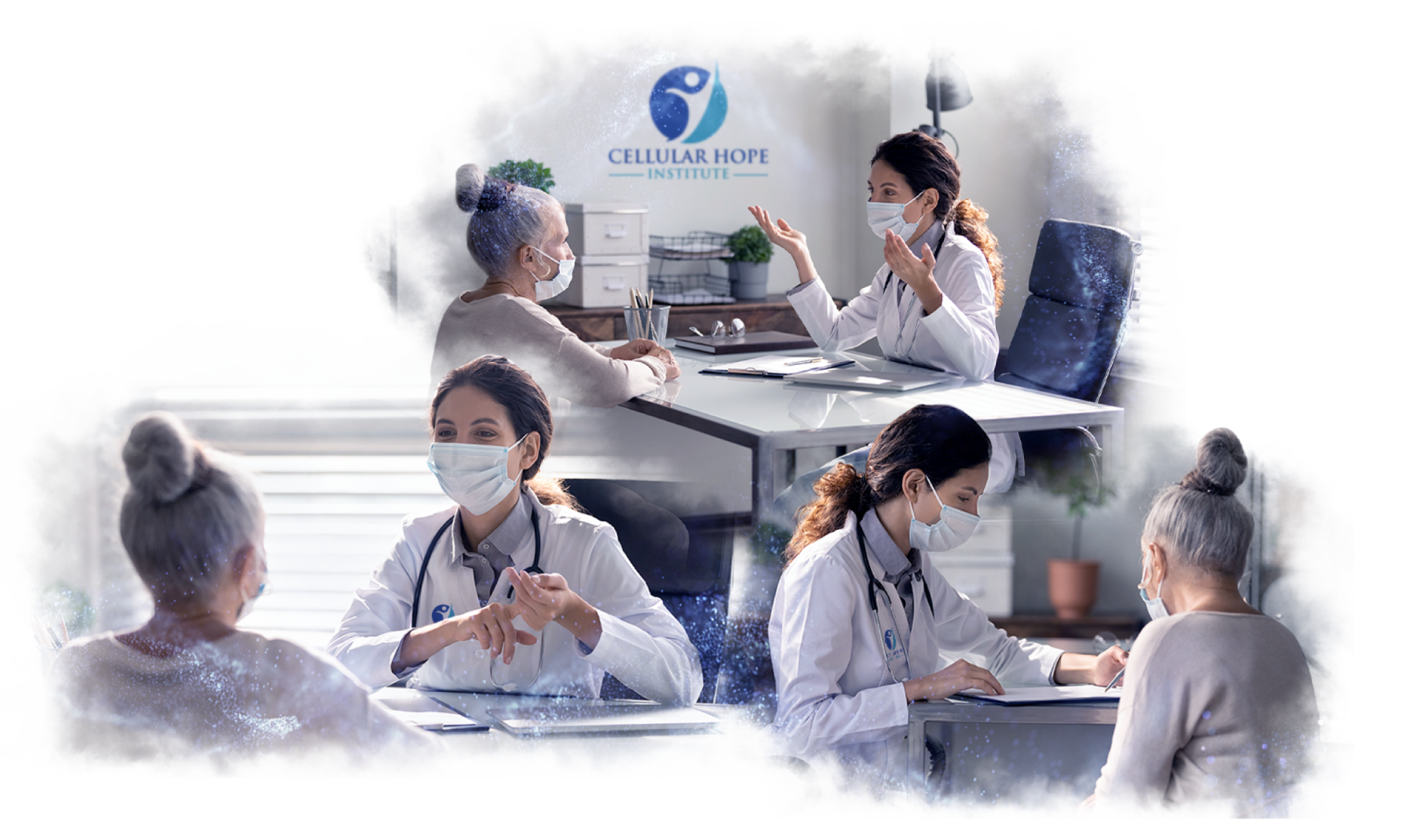
Contact Us
Talk with us to see if Wharton’s Jelly injection therapy is the right fit for you: Click here
About Cellular Hope Institute
At Cellular Hope Institute, we evaluate, diagnose, and treat patients around the world on a daily basis with the latest regenerative medicine modalities available today.
- Published in Blog


